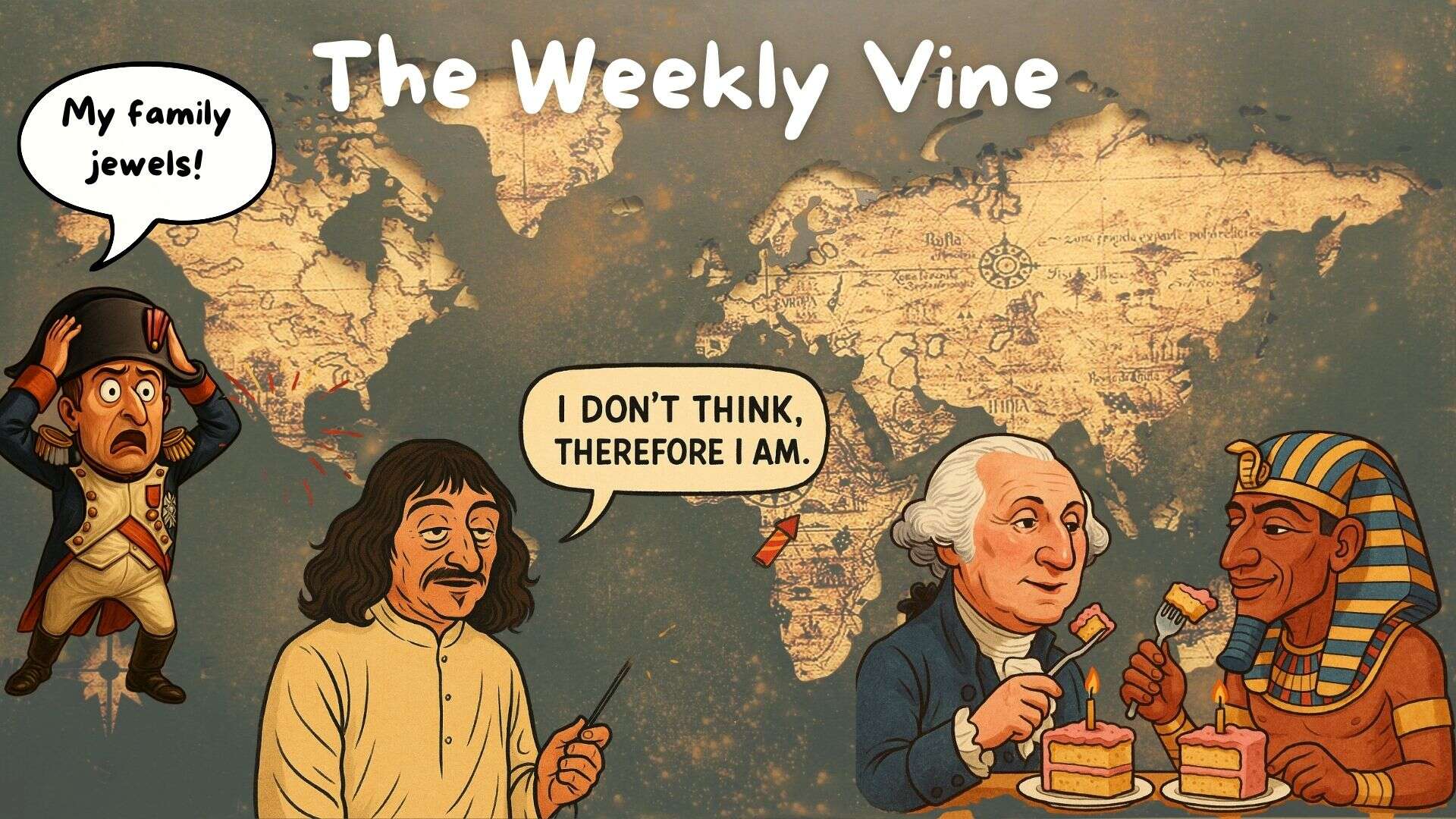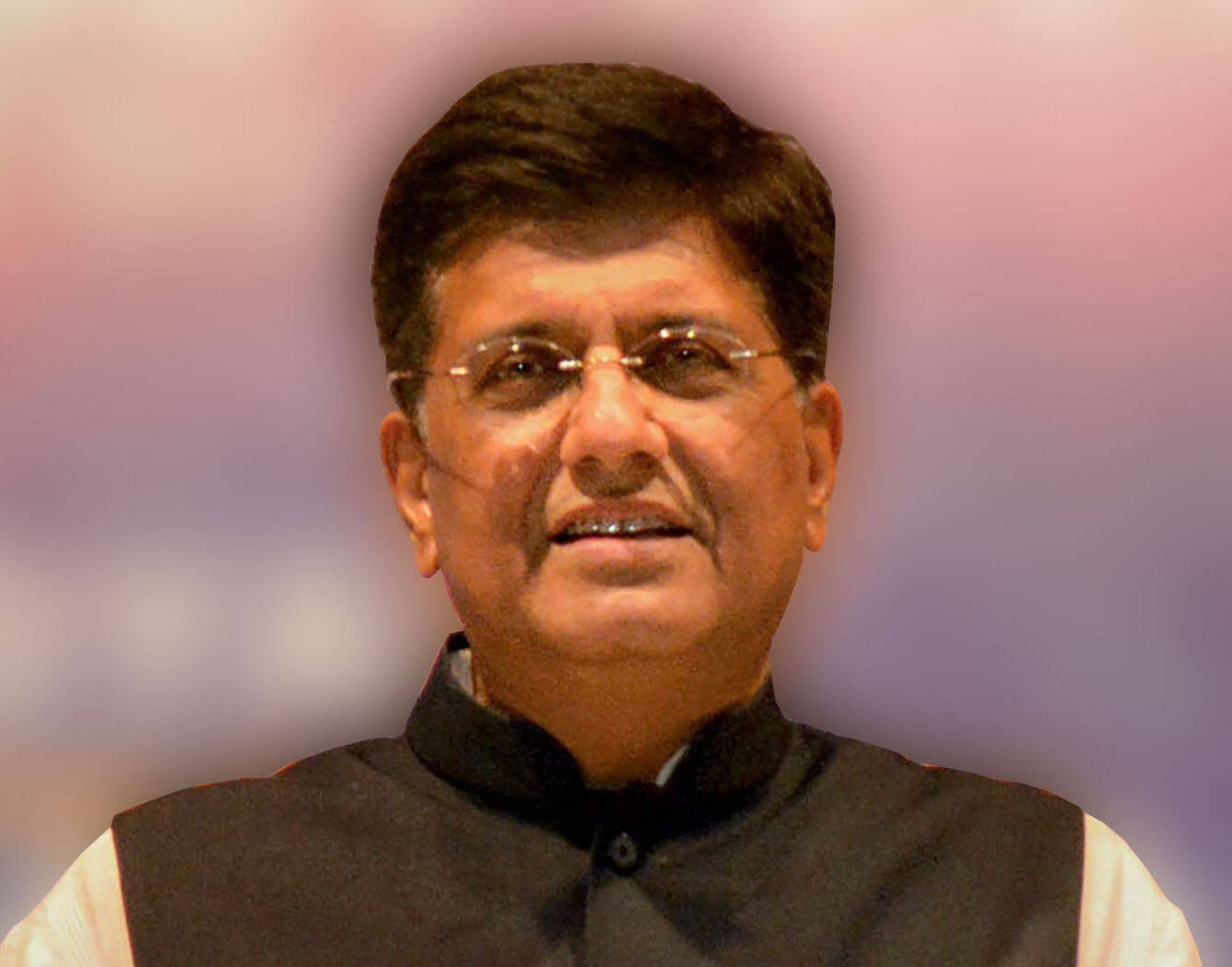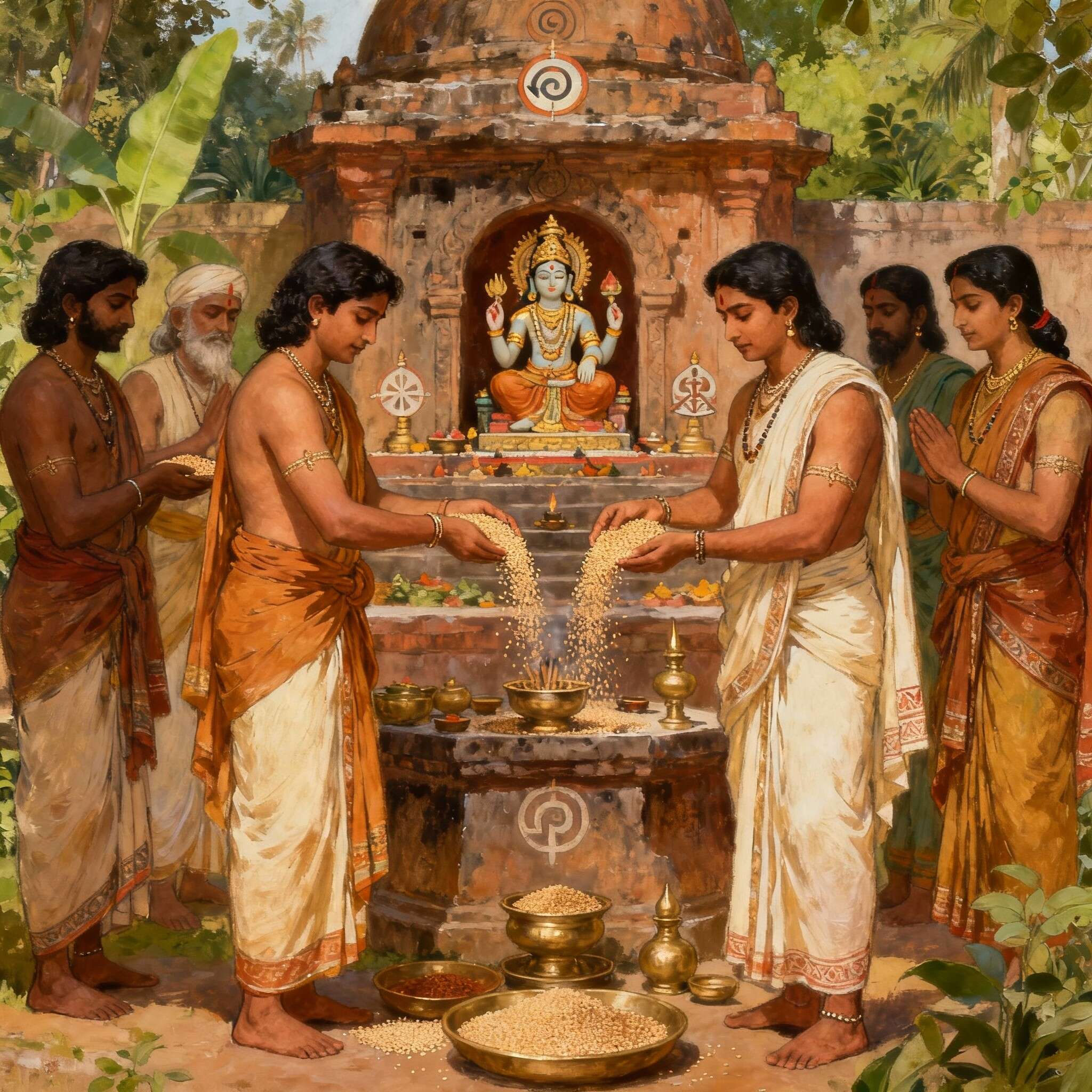Cracked reasoning, Donny wakes up, and Napoleon’s lost bling

Hello and welcome to another edition of the Weekly Vine. This week we run a rule over the asinine insanity of bursting crackers, the rising anti-Indian rhetoric in MAGA ranks, the remarkable Louvre heist, the history of birthdays, and the art of missing targets.
Cracked Reasoning
One of the more curious human tendencies, despite having a remarkably high brain-to-body ratio, is our inability to reason logically when it comes to our own lives.
Take our tendency to burst Diwali crackers, an activity with a very poor ROI. It’s hell for humans and non-humans alike. Not only do the light-and-sound bangs of crackers last shorter than an average sororal-phrasing-loving Delhi boy, their environmental impact is staggering. For example, this year, as a TOI report notes, the surge of toxic smoke laden with pollutants and heavy metals caused the capital’s average hourly PM2.5 levels to touch 675 micrograms per cubic metre at midnight, the highest since Diwali 2021.
The only reason the city was even slightly breathable was because of strong winds. But none of these logical arguments will make a dent with the populace that loves to burst crackers. In our heads, the pollution is only because of stubble burning, and has nothing to do with Diwali.
A very simple explanation is that Hindus are sick and tired of all the liberal moral policing on their holidays, where PETA gives gyan on how firecrackers hurt pets while maintaining radio silence on festivals of other religions. But rebelling by choking oneself is hardly a logical discussion. Like most politico-cultural flashpoints, such as stray dogs, there’s no rationalising with people.
There are a few reasons for this.
Leon Festinger, the American social psychologist, argued in 1957 that it was cognitive dissonance—the psychological discomfort we feel from holding conflicting views—and to reduce that discomfort, we reject, rationalise, or ignore the facts, creating a mechanism of resistance in our brains. Then there’s what Ziva Kunda, the Canadian psychologist, called motivated reasoning in 1990, which explains why even intelligent people can defend wrong ideas.
Next, there’s confirmation bias, which British psychologist Peter Wason argued in 1960 was the key driver of motivated reasoning, where we selectively seek and interpret evidence that supports our existing beliefs. And finally, we have Dan Kahan, the American legal scholar, whose idea of identity-protective cognition extends motivated reasoning to sociology, where accepting other facts would threaten one’s social identity or sense of group belonging.
All of these combine to make us extremely illogical when it comes to crackers or when we play them up against other activities like stubble burning. In the end, maybe we don’t light crackers to celebrate Diwali at all. Maybe we light them to momentarily blind ourselves from seeing the smoke we’ve made of reason. Because nothing says “festival of lights” quite like a collective act of wilful darkness.
Donny Wakes Up
Most watchers of American politics are familiar with Dinesh “Donny” D’Souza, the brown MAGA mascot who was pardoned by Donald Trump in 2018 for campaign-finance fraud and spent years mistaking proximity for belonging. This week that illusion shattered. After defending Trump on X, D’Souza was met with a vicious reply from a supposed ally: “You’re Indian, you made nothing, you are nothing, your existence causes me disgust.”
For once, the man who built his career arguing that the Right wasn’t racist looked genuinely stunned. “In forty years,” he wrote, “I’ve never encountered this type of rhetoric. The Right never used to talk like this.” It was an overdue epiphany: MAGA’s brown foot soldiers are starting to realise they were never part of the club, simply a hired hand.
That dissonance has been apparent to everyone except those who convinced themselves they belonged because they hated Obama or Clinton. Beneath the photo-ops of Tulsi Gabbard as Director of National Intelligence, Kash Patel running the FBI, and Sriram Krishnan advising Trump on AI, a quiet contempt has festered. To the base, these Indians were never equals, just well-dressed subcontractors of a white nationalist project.
The Republican Party loves its Indian brains, not its Indian bodies. That hierarchy burst into view when Politico published 2,900 pages of leaked Telegram messages from the Young Republican National Federation, the GOP’s so-called “farm team.” The logs read like a fever dream of 1930s fascism: jokes about Hitler (“I love Hitler”), fantasies of gassing opponents, mockery of slavery and rape. Black people were “watermelon people.” Jews were “sneaky.” Asians were “ch–ks.” And Indians? They were “smelly.”
The now-infamous line, “He dated this very obese Indian woman… she just didn’t bathe often,” came from Bobby Walker and Vermont senator Samuel Douglass, both rising Republican stars. No one pushed back. No one found it offensive. Even the Vice President, JD Vance, brushed it off as boys being boys.
It shows how, for both ideologies, Indians remain the villain. For those of a liberal persuasion, they are the white-adjacent oppressors whose political ideology must be dismantled. For the MAGA faithful, they are the cheap labour coming in and taking jobs that should naturally belong to Americans, even though a Bud Light–drinking redneck would probably shoot himself in the foot before writing one line of code.
The irony was clear when the MAGA faithful turned against Vivek Ramaswamy, who has spent the last year trying to convince evangelicals of his loyalty to the cause, even passing off Hinduism as a facsimile of an Abrahamic faith, until he broke the dam by saying that the average American (read: white) was too lazy.
Which brings us back to Donny, whose shock is both tragic and poetic. The Right’s favourite immigrant has finally discovered what its least favourite ones always knew: in MAGA’s America, brownness is conditional. The Young Republicans didn’t invent this contempt; they just stopped pretending to hide it. MAGA Indians can chant “America First” all they like, but to the movement, they will always be the hired help.
Napoleon’s Lost Bling
It’s a bad time to be a former French leader. First, Nicolas Sarkozy became the first ex-French premier — since Napoleon — to be arrested. And now, speaking of Napoleon, even his exes are getting looted.
The Louvre, which has survived wars, revolutions, and the Da Vinci Code, couldn’t survive four men with a ladder and Wi-Fi. On a crisp Paris morning, thieves pulled up beside the Seine, scaled the walls of civilisation, and slipped into the Galerie d’Apollon — the sunlit shrine built for Louis XIV.
Five minutes later, they were gone.
Eight jewels vanished — not from a vault, but from France’s collective memory.
The sapphire parure of Queen Marie-Amélie and Queen Hortense, symbols of monarchy reborn. The emerald set of Empress Marie-Louise, Napoleon’s second wife, designed to celebrate a dynasty that never got a sequel. The Reliquary Brooch, where faith met fashion and both lost their souls. And the tiara and bodice knot of Empress Eugénie, the original influencer who made power look photogenic long before Instagram existed.
One crown — Eugénie’s emerald diadem — was found outside, damaged, like history itself had tripped during the getaway. The rest disappeared into the Paris underworld, taking with them €88 million worth of sparkle and several chapters of royal narcissism.
It wasn’t just a robbery; it was performance art.
The Galerie d’Apollon, built to immortalise the light of France, was robbed in broad daylight — as if irony had developed a French accent.
And then came the second act: the memes.
While the French press mourned a national tragedy, Indians online burst into applause. Twitter, Instagram, Reddit — all shouted one name: Mr A.
Because somewhere, Hrithik Roshan’s leather-clad thief from Dhoom 2 had apparently crossed the Channel, swapped his BMW for a baguette, and robbed the Louvre for old times’ sake.
France lost its crown jewels. India found its sense of humour.
And if you listen closely, somewhere over the Seine, you can almost hear it —
that familiar drumbeat rising from 2006, Dhoom Machale, Dhoom Machale…
Birthday Hullabaloo
As I get ready to take my 38th revolution around the sun, I have always wondered why people even celebrate birthdays. It seems a lot of hullabaloo for some coitus and conception, given all animals keep dropping babies all the time. Do we have to separate ours? The answer, like every trickle-down effect of Western civilisation, lies in industrialisation. While birthdays were reserved in the ancient world for pharaohs (when they ascended the throne) or for someone like George Washington, by the mid-19th century there were fewer children, and more clocks.
Industrialisation didn’t just change how we worked; it changed how we waited. When factories demanded punctuality, the concept of time seeped into everyday life. Suddenly, time wasn’t a vague flow marked by seasons or harvests—it was a measurable commodity. You clocked in, you clocked out, and you aged on schedule. The same mechanisms that measured a factory worker’s productivity began to measure personal milestones. The birthday became your annual quality-control check, a way to know if you were “ahead of time,” “on time,” or “behind time.”
Children led this shift. As families shrank, their economic role diminished but their emotional value grew. A birthday party became proof of affection, not necessity—a ritual to mark sentiment over survival. The industrial age turned the household into a miniature factory of feelings, and birthdays its annual performance review.
Einstein, of course, tried to warn us. He said time was relative, but tell that to an HR calendar or a Facebook reminder. In the space-time continuum of late capitalism, your worth is still determined by how efficiently you move from one candle to the next.
The cakes and candles were older traditions, but the need to ritualise them every year—to record, gift, photograph, and compare—was distinctly industrial. Birthdays democratised self-worth in a world that now measured everything. Every passing year became a KPI of existence. And so, we keep celebrating—not life, but the efficient passage of it.
Postscript: The art of missing targets by Prasad Sanyal
Now that half the year is over, and we stare at the two remaining quarters like half a packet of chips we swear we’ll savour slowly, the ritual begins again. The numbers arrive, the charts droop, and somewhere a manager says, in the voice of a man confessing to mild adultery, “We missed our targets.” Nobody flinches anymore. Missing targets has become less of a shock and more of an aesthetic—a corporate art form perfected over years of practiced disappointment.
What’s fascinating isn’t the miss itself, but the poetry we spin around it. Somewhere between June and July, teams start speaking in euphemisms. Failure becomes “stretch.” Decline becomes “recalibration.” Exhaustion is now “strategic realignment.” The quarter didn’t go wrong; it just “shifted focus.” It’s the verbal yoga of modern work—bending the truth till it looks flexible. HR calls it optimism. The rest of us call it survival.
Disclaimer
Views expressed above are the author’s own.
END OF ARTICLE





